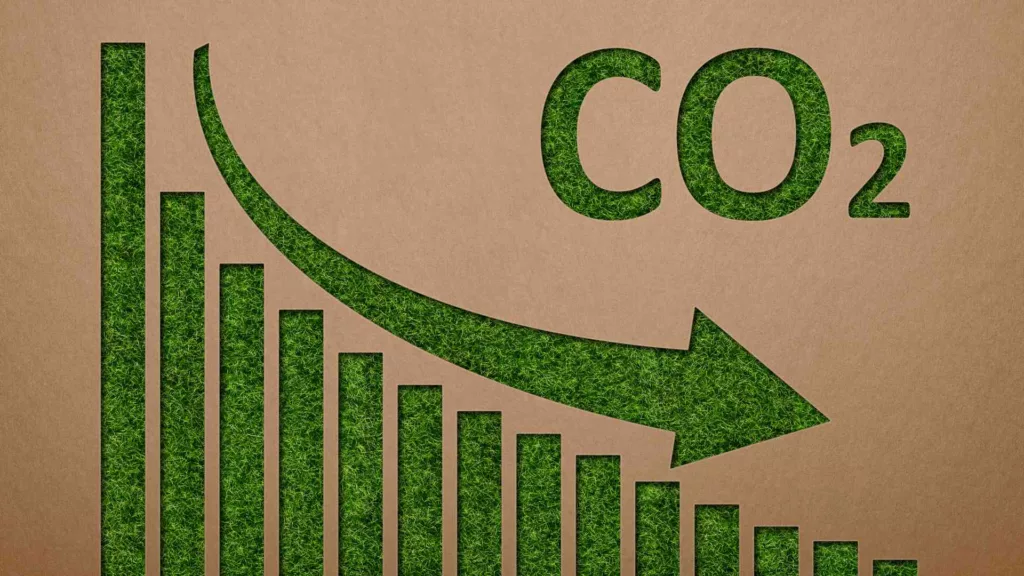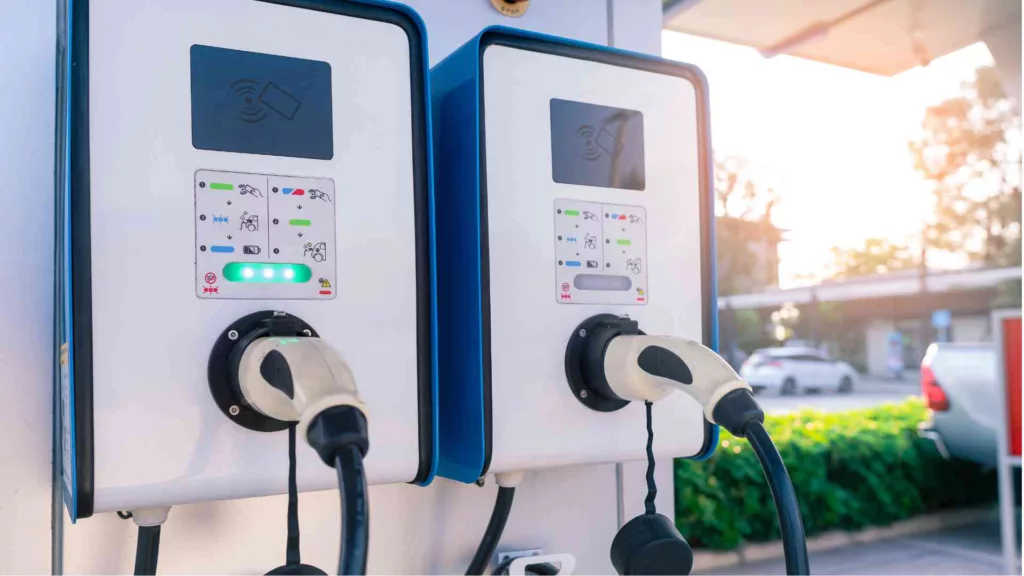Posted in Blog, Eco-innovation, Innovation by Jo North
Net Zero Innovation
In recent years, the topic of a Net Zero economy has moved from the fringes to the forefront of global discussions about our future. The quest to achieve net zero emissions is now a universally recognized mission, closely tied to the commitments outlined in the Paris Agreement and echoed by industry leaders across the globe.
In this decade, perhaps more than any other in history, the actions we take will determine the trajectory of our planet for centuries to come. Recognizing this human need to address and mitigate climate change, businesses are stepping up to the plate, leveraging the latest developments in technology and innovation to foster a green industrial revolution.
Navigating this new landscape is not without its challenges. However, the pursuit of Net Zero goals is no longer merely a regulatory obligation, but rather a unique opportunity to reshape industries, generate sustainable growth, and contribute to a healthier, more resilient world. As the momentum towards a Net Zero future continues to build, understanding the intersection of innovation, technology and sustainability is more critical than ever.
In this article, I’ll explore how technological innovation is playing a pivotal role in propelling us towards a Net Zero economy, reshaping businesses and industries in the process. I’ll delve into some of the most promising strategies and technologies currently at play, and consider the potential they hold for our collective future.
Join me on a journey through the latest developments in this critical space, and uncover some of the steps we can take today to ensure a sustainable tomorrow.

What is Net Zero Innovation?
Net Zero Innovation is the process of developing and implementing new strategies, practices, and technologies to dramatically reduce greenhouse gas emissions, particularly carbon emissions. Its ultimate aim is to achieve a balance between the amount of greenhouse gases produced and the amount removed from the atmosphere. Taking an innovative approach is an essential component of our response to the climate crisis and is key to transitioning towards a circular economy.
What is a Circular Economy?
A circular economy is an economic system aimed at eliminating waste and the continual use of resources. This model is inherently sustainable and is one in which net zero innovation can thrive. Underpinned by R&D investment, Net Zero Innovation can lead to the creation of new, cleaner technologies, improved efficiency, and the development of sustainable practices across industries. This, in turn, leads to reduced emissions, energy consumption, and waste, making a significant contribution to mitigating climate change.
Achieving a state of net zero emissions represents a significant achievement, both for individual businesses and for the global economy as a whole. Through research and development (R&D) investments, we can drive the innovations needed to achieve this goal and address the climate crisis head-on. By centering Net Zero Innovation in our business practices and policy-making, we can ensure a sustainable and resilient future while contributing to a prosperous circular economy.

The Race to Net Zero – Opportunities for Business
The journey to net zero is not just a vital step in our global response to climate change: it also represents a unique opportunity for businesses. Transitioning towards a net zero future can give companies a competitive edge, open up new markets, and spur innovation in ways that benefit both the environment and the bottom line.
Competitive Edge
Firstly, achieving net zero emissions can provide businesses with a competitive edge in an increasingly eco-conscious marketplace. Consumers and investors are now more environmentally aware than ever before, often choosing to support businesses that demonstrate a genuine commitment to sustainability. By actively pursuing net zero goals, companies can align with these values, enhancing their brand image and attracting new customers, investors, and even talent in the process.
New Markets
Embracing net zero targets can lead to the discovery of new markets. As businesses innovate to reduce their carbon footprint, they often develop new technologies, services, or processes that have market potential in their own right. These can range from energy-efficient products to carbon capture technologies, or services that help other companies reduce their emissions. Through this process of innovation, businesses can find themselves leading entirely new markets born from the drive to net zero.
Future-proofing
The transition towards net zero offers businesses the opportunity to future-proof their operations. Regulations regarding greenhouse gas emissions are likely to become more stringent in the future. Businesses that have already made significant progress towards net zero will be well-prepared to meet these new standards. By acting early, these businesses can avoid the potential future costs and disruptions associated with transitioning to a low-carbon economy, further enhancing their competitiveness.
Greater Efficiency
The journey towards net zero often leads to greater efficiency. In striving to reduce emissions, businesses are encouraged to take a closer look at their operations and identify areas where resources may be wasted. Through this, they can find opportunities to improve their efficiency, which can lead to significant cost savings in the long run.
The transition to a net zero future is not just a vital step in addressing the climate crisis. It also offers unique opportunities for businesses. By embracing net zero innovation, companies can gain a competitive edge, explore new markets, future-proof their operations, and improve their efficiency, proving that sustainability and profitability can go hand in hand.
Net Zero Innovation Examples
Energy and Net Zero
Energy, in all its forms, is integral to our daily lives and the functioning of our economies. However, the ways we generate and consume energy are also the primary drivers of climate change. In the race to net zero, it becomes crucial to focus on both energy efficiency and the source of the energy we use.
According to the International Energy Agency (IEA), to achieve net zero emissions by 2050, the world needs to optimize energy use and substantially ramp up the deployment of renewable energy. This involves a comprehensive shift in our energy systems, transitioning from fossil fuel reliance to a dominance of green energy sources such as wind, solar, and hydropower.
Energy Efficiency
Energy efficiency plays a significant role in this clean energy transition. By making buildings, transportation, and industrial processes more efficient, we can achieve substantial reductions in emissions. The Department of Energy and its Advanced Research Projects Agency-Energy (ARPA-E) have been instrumental in driving research and development in this field, fostering new technologies that reduce energy consumption and increase overall efficiency.
Energy Sources
Equally important is the source of our energy. Clean energy technologies that harness renewable resources offer a way to power our economies without contributing to climate change. The ongoing advances in green energy technology and the decreasing costs of renewable energy sources are game-changers in this respect, helping us reimagine the entire energy system.
Energy Security and Energy Justice
Despite the progress, a lack of clarity persists about how best to manage the transition, especially in relation to energy security and energy justice. Energy security involves ensuring a steady supply of energy, which can be a challenge given the intermittent nature of some renewable sources. Meanwhile, energy justice concerns the equitable distribution of the benefits and burdens of the energy transition. It’s essential that the shift to a greener, more efficient energy system doesn’t disproportionately disadvantage any groups.
The race to net zero requires a dual focus on improving energy efficiency and transitioning to renewable sources of energy. It’s about finding solutions that provide reliable, affordable, and sustainable energy for all while minimizing environmental impact. This clean energy transition, though complex, is an essential component of global efforts to achieve a sustainable future.
Clean Energy
Clean energy, often referred to as renewable energy, harnesses natural processes to generate power. These processes include sunlight, wind, tides, water, and various forms of biomass, energy sources that are renewable and produce minimal emissions.
Wind Power
One of the most promising and rapidly growing types of clean energy is wind power. Wind power is generated by converting the kinetic energy from wind into electrical power, typically through the use of wind turbines. There are two main types of wind energy: onshore and offshore.
Onshore wind farms are typically located on land and are a common sight in many parts of the world. These installations can be constructed relatively quickly and at a lower cost compared to offshore wind farms.
The offshore wind industry, on the other hand, refers to wind farms installed in bodies of water. Offshore wind turbines are typically larger than their onshore counterparts and can capture more wind due to the unobstructed nature of their location, often leading to higher energy production. The potential of the offshore wind industry is vast, especially as technology advances and the feasibility of installing turbines in deeper waters increases.
Solar
Solar energy is another vital source of clean energy. This technology uses photovoltaic cells to convert sunlight directly into electricity. Advancements in solar panel technology have significantly reduced costs in recent years, making solar power an increasingly competitive energy source.
Hydropower
Hydropower, or water power, is one of the oldest and most used form of renewable energy. It works by converting the energy in flowing or falling water into electricity. While traditional hydropower installations like dams can have significant environmental impacts, newer, more environmentally-friendly forms of hydropower like run-of-river and tidal power are gaining prominence.
Biomass
Biomass energy involves converting organic material, such as plant matter or animal waste, into energy. This can be done by burning the biomass directly, converting it into a gas, or turning it into a liquid fuel. While biomass is technically renewable, it’s important to manage it sustainably to avoid deforestation and other environmental concerns.
Geothermal
Geothermal energy harnesses the heat energy stored beneath the Earth’s surface. This can be used for heating and cooling or converted into electricity. Geothermal energy is reliable and produces low emissions, but its use is currently limited to areas where geothermal resources are easily accessible.
Each type of clean energy has its unique benefits and challenges. By investing in, or sourcing suppliers who offer a diverse mix of these technologies, businesses can ensure a stable and sustainable energy supply that reduces emissions and helps us achieve our net zero goals.
Nature-based Solutions
Nature-Based Solutions (NBS), a term coined by the International Union for Conservation of Nature (IUCN), refers to the sustainable management and use of nature to tackle socio-environmental challenges. In the context of climate change and the race to net zero, nature-based solutions play a pivotal role.
Climate innovation is often associated with high-tech solutions, from carbon capture and storage to advanced renewable energy technologies. While these are undoubtedly essential, they are just one piece of the puzzle. Natural climate solutions—those that harness the power of nature—are equally critical in addressing climate change.
Carbon Sequestration
Carbon sequestration refers to the process of capturing and storing atmospheric carbon dioxide (CO2), one of the primary greenhouse gases contributing to global warming and climate change. This process aims to slow the accumulation of greenhouse gases in the atmosphere by capturing and storing CO2 in a reservoir, preventing it from being released back into the atmosphere.
Carbon sequestration can occur naturally, through processes such as photosynthesis in plants and trees, or it can be a result of human activity through processes like carbon capture and storage (CCS).
In the context of human-induced carbon sequestration, it typically involves two major steps. The first is capturing and separating CO2 from other gases, either directly from the atmosphere or from industrial sources like power plants. The second is storing this captured CO2, typically by injecting it deep underground into geological formations, or utilizing it in certain manufacturing processes, or in enhanced oil recovery operations.
Carbon sequestration is considered a vital strategy for reducing the amount of CO2 in the atmosphere and mitigating the impact of global warming. However, it is not a standalone solution and needs to be combined with other approaches such as reducing carbon emissions and adopting renewable energy sources.
Forests, wetlands, grasslands, and agricultural lands absorb carbon dioxide from the atmosphere, acting as natural carbon sinks. By protecting and restoring these ecosystems, we can enhance their capacity to absorb more CO2 and help to offset our greenhouse gas emissions. This is a central aspect of nature-based solutions.
Multiple Benefits
Simultaneously, these solutions offer multiple benefits beyond carbon sequestration. They can help preserve biodiversity, protect against natural disasters (like floods and landslides), and provide livelihoods for communities, contributing to sustainable development goals.
Moreover, these solutions can play a role in a sustainable energy transition. Biomass from sustainably managed forests and agricultural residues can be used as a source of renewable energy, contributing to a diversified energy mix.
Protecting Critical Minerals
However, implementing nature-based solutions needs to be done thoughtfully. Consider the issue of critical minerals, for example. These minerals—including lithium, cobalt, and various rare earth elements—are essential for many clean energy technologies. As demand for these minerals grows, we must ensure that their extraction doesn’t harm natural ecosystems or local communities. Here, nature-based solutions can help, by integrating principles of ecological sustainability and social justice into mineral extraction and use.
Nature-based solutions are a crucial component of the global response to climate change. They represent an approach that goes beyond merely “doing less harm” to actively improving the health of our planet. By integrating these solutions into our strategies for tackling climate change, we can work towards a future that is not just carbon-neutral, but also more resilient, biodiverse, and equitable.
Lithium-ion Batteries
Lithium-ion batteries play a pivotal role in net zero innovation, particularly in the context of electric vehicles and renewable energy storage. They have several advantages, but it’s also important to understand their limitations and challenges. Here are some of the pros and cons of lithium-ion batteries.
Pros:
- High Energy Density: Lithium-ion batteries have a high energy density, meaning they can store a large amount of energy in a relatively small space. This makes them particularly suitable for applications like electric vehicles, where space and weight are critical considerations.
- Efficiency: Lithium-ion batteries have a high efficiency, losing little energy in the charging and discharging process. This makes them more cost-effective and environmentally friendly.
- Long Lifespan: Lithium-ion batteries can withstand many charge and discharge cycles without significant degradation, making them durable and long-lasting.
- Low Maintenance: Unlike some other battery technologies, lithium-ion batteries do not require regular maintenance to ensure their performance, making them more convenient for users.
Cons:
- Resource Extraction: The production of lithium-ion batteries requires the extraction of lithium and other rare minerals, which can have significant environmental impacts. These include water pollution and depletion, habitat destruction, and greenhouse gas emissions from the extraction process.
- Limited Supply of Raw Materials: The raw materials for lithium-ion batteries, including lithium, cobalt, and nickel, are finite and in limited supply. This has raised concerns about the long-term sustainability of lithium-ion batteries.
- Battery Disposal and Recycling: While efforts are being made to improve the recycling of lithium-ion batteries, currently, a significant proportion end up in landfill at the end of their life. This not only wastes valuable resources but can also lead to soil and water pollution.
- Safety Concerns: While they are generally safe, lithium-ion batteries can pose a fire risk if damaged or improperly handled. They can also overheat if overcharged, a phenomenon known as thermal runaway.
While lithium-ion batteries are a critical component of net zero innovation, it’s important to address their environmental and social impacts. We need to continue to invest in research and development to improve the sustainability and safety of these batteries, as well as explore alternative energy storage technologies.
Net Zero Innovation and Industry
The industrial sector, from heavy industry to manufacturing, has a critical role to play in the transition to a net zero economy. These industries are some of the largest sources of greenhouse gas (GHG) emissions, contributing significantly to global warming. The private sector’s involvement is crucial in driving net zero innovation, transforming industrial processes, and making supply chains more sustainable.
Challenges of Heavy Industry
Heavy industries like steel, cement, and chemicals are particularly challenging. These sectors are responsible for a large proportion of global CO2 emissions, both from the energy used in their processes and from the chemical reactions involved in producing their products. To achieve net zero emissions, these industries need to adopt new technologies and processes. This could involve using renewable energy sources, implementing energy-efficient practices, and developing new materials with lower carbon footprints.
Supply Chain Opportunities
Supply chains also represent a significant opportunity for emissions reductions. By taking a holistic view of their supply chains, companies can identify areas where emissions can be reduced. This might involve sourcing materials more sustainably, reducing waste, improving logistics, or working with suppliers to reduce their emissions.
Electric Vehicles
Electric vehicles (EVs) are another area where the industrial sector can make a significant contribution to net zero innovation. The automotive industry is undergoing a fundamental shift away from fossil fuel-powered vehicles towards EVs. This transition not only reduces emissions from vehicles themselves but also drives changes throughout the automotive supply chain. Batteries for EVs, for example, require a range of industrial products, and the production processes for these can be made more sustainable.

Making Progress
While the challenges are significant, many industries are already making progress. Across the world, companies are investing in renewable energy, developing new low-carbon materials, and reimagining their supply chains. There is a growing recognition that achieving net zero emissions is not just an environmental imperative, but also a business opportunity.
In my view, the industrial sector has a vital role to play in achieving a net zero economy. By driving innovation in technology, materials, and supply chains, the private sector can help to reduce GHG emissions and create a more sustainable future. While the path to net zero is complex, with commitment, investment, and a healthy innovation ecosystem, it is within our reach – especially through collaborative innovation.
New Net Zero Technologies
As we navigate the path to achieving our climate goals, the role of innovative net zero technologies is undeniably crucial. These advanced solutions are helping us transform our economies, making them more efficient, resilient, and sustainable. They are driving emissions reductions and facilitating the transition to low carbon solutions across various sectors.
Energy efficiency is a key aspect of these innovations. Through technological advancements, we can optimize how we use energy in our homes, businesses, and industrial processes, reducing emissions and costs. Green technologies, including advanced heating and cooling systems, smart grids, and energy-efficient lighting, are all contributing to this trend.
Climate technologies are also changing the face of power generation. Low carbon technologies like wind, solar, and hydropower, once considered niche, are now moving closer to the mainstream. Innovations in these areas, such as improved turbine designs, high-efficiency solar panels, and better energy storage systems, are making renewable energy more reliable and affordable.
Technology Policy
Technology policy plays an important role in the adoption and scaling of these innovative technologies. By providing regulatory support, incentives, and funding for research and development, governments can accelerate the transition to a clean energy future.
Digital Twins
An exciting example of this innovation is the concept of the ‘digital twin’. This technology creates a digital replica of a physical entity – such as a building, a power grid, or an entire city – that can be used to model and test different scenarios. In the context of net zero, digital twins can be used to optimise energy use, reduce emissions, and plan for the integration of renewable energy sources. This is just one of the ways in which innovative technologies are revolutionising our approach to climate change.
Innovative Net Zero Technologies are Reshaping Our World
Meanwhile, clean technologies are not just limited to the energy sector. They’re also transforming industries like transportation, agriculture, and manufacturing. Electric vehicles, precision farming techniques, and circular manufacturing processes are all examples of how technology can help reduce emissions and move us towards a more sustainable future.
Innovative net zero technologies are reshaping our world, offering new ways to achieve our climate goals. From energy efficiency to digital twins, these advancements are demonstrating that a low carbon future is not only possible, but also economically viable and beneficial. The challenge now is to accelerate their deployment, and technology policy will be crucial in facilitating this transition.
Behavior Change and Net Zero Innovation
Behavioral change at all levels – from leadership to employees, and including customers – plays a critical role in achieving net zero innovation. The transition to a sustainable future requires more than technological innovation; it demands an evolution in mindset and values. Let’s look at how we can foster this change:
Leadership Behavior Change
As leaders, the commitment to sustainability must be sincere and deeply rooted. This commitment is reflected in strategic decisions, investments, and the overall direction of the company. Leaders should:
- Set Clear Sustainability Goals: These should be ambitious yet achievable, and integrated into the overall business strategy.
- Lead by Example: Leaders should embody the company’s sustainability values in their actions, demonstrating that sustainability isn’t just a corporate objective, but a personal commitment.
- Promote Transparency: Honest and open communication about sustainability efforts, successes, and challenges fosters trust and demonstrates commitment.
Employee Behavior Change
Employees are the heart of any organization, and their buy-in and engagement are key to achieving sustainability goals. Here are ways to facilitate this:
- Educate and Engage: Regular training sessions and workshops can help employees understand the importance of sustainability and their role in achieving it.
- Empower and Involve: Encourage employees to contribute ideas and involve them in sustainability initiatives. This not only generates innovative solutions but also fosters a sense of ownership and commitment.
- Reward and Recognize: Acknowledge and reward sustainable practices. This could be as simple as recognizing an employee’s green initiative in a company meeting or establishing formal sustainability awards.
Customer Behavior Change
Customers are a vital part of the sustainability equation. Companies can influence customer behavior through:
- Education and Awareness: Use marketing and communications to inform customers about the environmental impact of their purchases and how they can make more sustainable choices.
- Incentives and Benefits: Offer incentives for sustainable behavior, such as discounts for reusable packaging or loyalty points for green products.
- Sustainable Options: Make it easy for customers to make sustainable choices. This could involve offering a range of eco-friendly products, providing clear information about the sustainability credentials of your products, or offering a take-back or recycling service for used products.
Achieving net zero innovation is not just a technological challenge but a behavioral one too. By fostering a culture of sustainability at all levels – from leadership to employees to customers – businesses can drive meaningful and lasting change towards a more sustainable future.
Create a Net Zero Strategy for Your Business
Creating a net zero innovation strategy requires a thoughtful approach, marked by bold leadership, focused research, and targeted investments. To chart your business’ path towards a net-zero future, follow these key steps:
Set an Ambitious Goal
It begins with setting a clear, ambitious goal to achieve net zero emissions. This commitment sends a powerful message to stakeholders and provides a unifying focus for the organization.
Define the Focus Area
While the net zero objective is broad, it’s important to define specific focus areas based on your business’s nature and capabilities. For example, an energy company might focus on developing renewable energy technologies, while a manufacturing firm could focus on energy-efficient processes or circular business models.
Develop an Innovation System
An effective innovation system should encourage basic research and foster creative problem-solving. This involves creating an environment where ideas can be shared and developed, risks taken, and failure seen as learning.
Make Strategic Investments
Prioritizing net-zero technology investments is vital. This could involve investing in in-house R&D, funding external research projects, or partnering with startups and other businesses. Remember, these investments aren’t just about reducing emissions; they can also drive business growth and competitiveness.
Adopt New Business Models
Achieving net zero emissions may require you to innovate a new, more sustainable business model. This could involve adopting a circular model that reduces waste, or a service-based model that prioritizes efficiency and sustainability.
Establish an Innovation Framework
A robust innovation framework should be in place to guide these efforts. This framework should define how ideas are generated, evaluated, developed, and implemented. It should also ensure that innovations are aligned with the business’s net zero goal.
Executive Leadership
The executive director and other senior leaders must be actively involved in shaping and driving the net zero innovation strategy. Their support provides the resources and authority needed to implement change, and signals the importance of these efforts to the wider business.
Address Climate Change Proactively
A net zero innovation strategy should be proactive, not reactive. This means not only responding to regulatory pressures, but also recognizing the business opportunities that come from addressing climate change. This could include developing new products or services, entering new markets, or improving operational efficiency.
Creating a net zero innovation strategy is a complex, but crucial endeavor. With a clear goal, a focused approach, and a commitment to innovation, business leaders can drive their organizations towards a net-zero future. This is not only beneficial for the planet, but also for the long-term success of the business.
Net Zero Commitments
Setting, publishing, delivering, and reporting on Net Zero Commitments as part of your strategy is a critical process that every forward-thinking business should consider in the race against climate change. Here are key steps that can guide you in this important journey:
Setting Net Zero Commitments
- Identify Priority Areas: Depending on your business type and sector, identify priority areas where you can reduce emissions effectively. This might include energy usage, supply chains, transport, waste management, etc. Make sure these commitments align with your overall business strategy and values.
- Define Clear Goals: Be specific about what you want to achieve and by when. Goals should be ambitious, but also realistic and measurable. For instance, you might commit to reducing your carbon emissions by 50% by 2030, and achieving net zero emissions by 2050.
Publishing Net Zero Commitments
- Communicate Transparently: Openly share your commitments with all stakeholders, including employees, customers, suppliers, and investors. This could be done through a dedicated sustainability section on your website, in annual reports, or at shareholder meetings.
- Engage Stakeholders: Encourage feedback and input from your stakeholders. This can help you refine your commitments, and also helps to build buy-in and support for your plans.
Delivering on Net Zero Commitments
- Implement Changes: This is the phase where you turn your commitments into action. You might need to invest in new technologies, change business processes, or even alter your business model.
- Monitor Progress: Regularly track your progress towards your commitments. This will allow you to see where you’re making progress, and where you might need to make adjustments.
Reporting on Net Zero Commitments
- Provide Regular Updates: Regularly report on your progress towards your commitments. This should be done in a transparent and verifiable manner, and could be part of your annual reporting process.
- Highlight End-to-End Progress: Show progress at all levels, from the boardroom to the factory floor. This demonstrates your commitment to transparency and gives a holistic view of your efforts.
- Celebrate Successes: When you reach a milestone or achieve a goal, make sure to celebrate and share this success. This not only boosts morale but also demonstrates the feasibility of achieving net zero emissions.

Avoid Greenwashing
Greenwashing is when an organization gives misleading information about a product or service being more environmentally sound than it really is. It is essentially a marketing tactic. The business capitalizes on the growing demand for environmentally friendly products, without making substantive changes to its operations or products.
Greenwashing can be very damaging. It misleads consumers who are trying to make environmentally conscious choices and undermines genuine efforts towards sustainability. It is crucial for consumers to be vigilant, and for businesses to be transparent and accountable in their sustainability claims.
Genuine Commitments
Setting, publishing, delivering and reporting on genuine Net Zero Commitments is an important step in the fight against climate change. It’s a process that requires careful planning, continuous effort, and unwavering focus. However, the rewards – in terms of environmental sustainability, improved stakeholder relationships, and future-proofing your business – are well worth the effort.
Act Now
As we find ourselves in an era defined by climate action, the world watches as leading entities like the World Economic Forum, the United States Federal Government, and the European Commission and the UK Government take decisive steps towards building a zero to low carbon future. Their policy changes and increased risk appetite signify a paradigm shift that emphasizes the urgency of emissions reductions.
Public investments, such as the European Regional Development Fund, are being funneled into climate-focused initiatives, demonstrating governments’ priorities and commitment to action. We are seeing the rise of platforms such as the Net Zero Innovation Network and Net Zero Hub, facilitating collaborations and sharing of new solutions for a sustainable future. These initiatives underscore the good work being undertaken globally and provide a roadmap for businesses navigating this green transition.
These developments suggest that the funding bodies are getting better at encouraging businesses to join the race to net zero. It’s not just about investing in technology and infrastructure. It’s also about nurturing an ecosystem where innovative ideas can come to fruition. The stage is set, and the call for net zero is loud and clear.
Take a look at my article here for practical, green innovation tips and examples.
Check our our introduction to eco-innovation for businesses. And please do get in touch if you’d like our help with your company’s Net Zero Innovation journey. We’d love to help.

